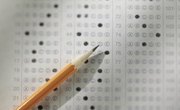Whether you are taking a statistics class or some advanced math subjects, at some point throughout school you will likely need to understand the difference between validity and reliability. While these concepts are closely related, they are not the same thing. These terms are not interchangeable, and it is very important to understand how they differ and be able to distinguish between the two. Although, you will hear the two terms often used together.
Reliability and Validity Definition
By definition, reliability means the quality of being trustworthy or of performing consistently well. In other words, think about someone who is reliable; you may think of them as someone you can count on. Statistically speaking, researchers will seek out measurements or tools that are reliable.
On the other hand, the word validity refers to the quality of being logically or factually sound. You may use the term validity to refer to someone’s position or opinion on a certain subject. For example, you may ask if a position is valid, based on facts or logical.
In research, validity often refers to results or an outcome. Essentially, one would determine if the results of a study or outcomes are factually sound, or valid. Researchers often question whether or not the outcomes or findings of a study are valid.
Distinguish Between Validity and Reliability
These terms are generally used within the field of statistics and refer to forms or types of measurement. You may also determine if a measurement tool is both valid and reliable. It is important to understand that there is a difference between reliability and validity.
Validity refers to the extent to which a tool measures what it is supposed to measure. Additionally, the validity of a study refers to the extent to which the study is actually studying what it says it is studying. An example of validity would be an intelligence test. An intelligence test says it measures IQ, and in fact it has been proven to actually measure IQ.
Reliability often refers to repeatability. In other words, a tool is reliable if you use it over and over and consistently get the same results. The same can be applied to a research study. If the study is replicated over and over with sustainable results, it is deemed reliable.
An example of reliability in the form of a tool would be a bathroom scale or measuring tape. It is reliable because time after time, it will give the same result in either pounds or inches.
It is important to note that a measurement tool or research study can be reliable but not valid. Additionally, it can be valid but not reliable. The two concepts are related but not interchangeable.
Validity and Reliability in Research
There are two main types of validity in research: external validity and internal validity.
Types of Validity
External validity refers to the extent to which the results of a study can be generalized to the greater population. In other words, this determines if a study with a small sample of adult females ages 18 to 24 who are left-handed can be generalized to all females within the ages of 18 to 24 who are left-handed.
Internal validity refers to the extent to which the results of a study are, in fact, a result of cause and effect. Internal validity is important because it ensures that the study results are based on the specific causes in the study and not outside factors.
Types of Reliability
The most important types of reliability are inter-rater reliability and test-retest reliability.
Inter-rater reliability refers to the extent to which a tool will consistently measure what it is supposed to measure no matter who is using the tool. A tool is deemed reliable if multiple users report similar results.
Test-retest reliability refers to the extent to which a tool consistently measures the same way over and over. For example, a standardized test such as the ACT will give similar results even when administered multiple times.
Related Articles
References
Writer Bio
Melanie Forstall has a doctorate in education and has worked in the field of education for over 20 years. She has been a teacher, grant writer, program director, and higher education instructor. She is a freelance writer specializing in education, and education related content. She writes for We Are Teachers, School Leaders Now, Classroom, Pocket Sense, local parenting magazines, and other professional academic outlets. Additionally, she has co-authored book chapters specializing in providing services for students with disabilities.











